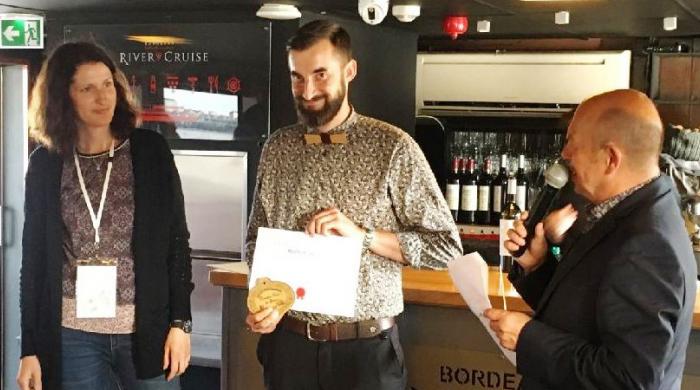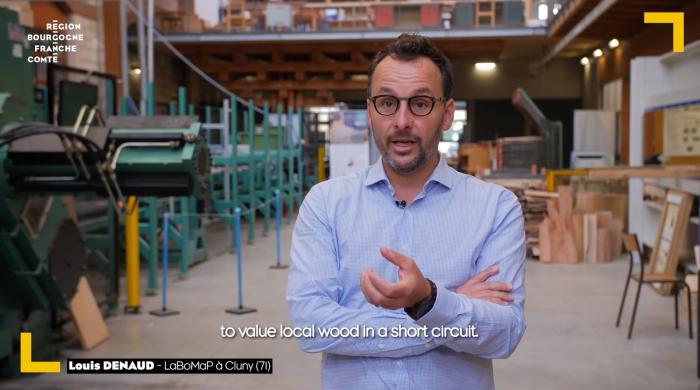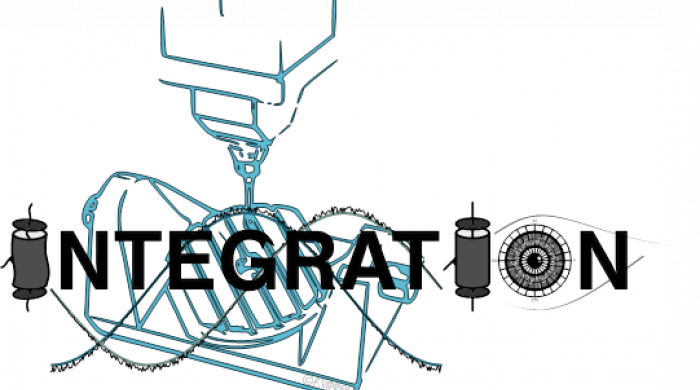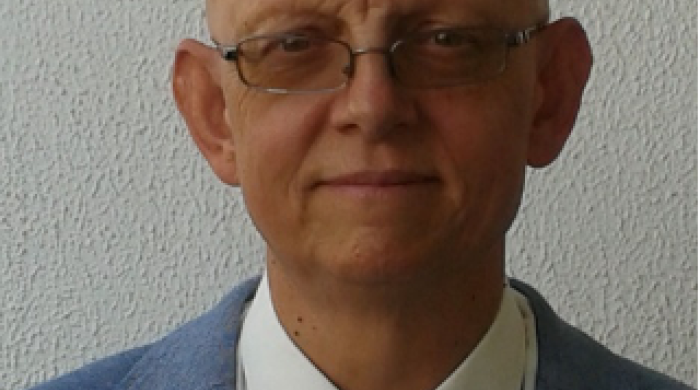
Xiang XU, doctorant au LaBoMaP, soutient sa soutenance de thèse intitulée : "Modélisation de l’Évolution de la Microstructure et de l’Intégrité de Surface en Usinage à Grande Vitesse du Ti-6Al-4V"
Xiang XU a réalisé une thèse en cotutelle entre Arts et Métiers (LABOMAP) et Xi'an Jiaotong University (Chine).
La soutenance de thèse se réalisera le 25 novembre 2022 à 9h30 (CET time) par TEAMS
Rejoindre la réunion TEAMS :
MEMBRES DU JURY
Rapporteurs
- M. Domenico UMBRELLO, Professor, University of Calabria
- M. Min WAN, Professor, Northwestern Polytechnical University
Examinateurs
- M. Mohammed NOUARI, Professor, University of Lorraine
- Mme. Madalina CALAMAZ, Associate Professor, Arts et Métiers
- M. Ke HUANG, Professor, Xi'an Jiaotong University
- M. Qinghua SONG, Professor, Shandong University
- M. Jun ZHANG, Professor, Xi’an Jiaotong University
- M. José OUTEIRO, Assoc. Professor HDR/Habil., Arts et Métiers
RESUME
Le développement rapide de l'industrie aérospatiale est la motivation pour augmenter la productivité de la fabrication en gardant la même qualité de pièce ou même en l'améliorant. L'usinage à grande vitesse (UGV) des matériaux difficiles à usiner comme les alliages à base de titane est un moyen d'atteindre une productivité élevée. Dorénavant, la plupart des travaux de recherche sur l'intégrité de surface en usinage sont basés sur l'analyse phénoménologique et impliquent rarement une analyse théorique des phénomènes physiques responsables de la modification des propriétés de la couche proche de la surface. Dans ces travaux de recherche, l'évolution de la microstructure et l'intégrité de surface induites par l’UGV de l'alliage Ti-6Al-4V sont étudiées à l'aide d'approches de modélisation et expérimentales. Une approche de modélisation multi-échelles combinant des simulations par éléments finis utilisant l'approche CEL et la méthode des automates cellulaires a permis de simuler l'évolution de la microstructure lors de l'usinage, y compris dans la surface et la sous-couche usinées. La topographie de la surface, la déformation plastique, la microdureté et les contraintes résiduelles dans la surface et la sous-couche usinées ont également été simulées, révélant l'influence de la nature cyclique du procédé de coupe sur ces caractéristiques d'intégrité de surface.
MOTS CLES
Modélisation multi-échelle, Usinage à Grande Vitesse, Ti-6Al-4V, Microstructure, Recristallisation Dynamique, Intégrité de Surface.
_________________________
We are pleased to invite you to the thesis defense of Mr. Xiang XU, entitled: "Modelling of Microstructure Evolution and Surface Integrity in High Speed Machining of Ti-6Al-4V alloy".
Xiang XU completed a joint supervision Ph.D thesis between Arts et Metiers Institute of Technology (ENSAM-LABOMAP) and Xi'an Jiaotong University (China).
The thesis defense will take place on November 25, 2022, at 9:30 a.m. (CET time) by TEAMS using the following link: Click here to join the meeting
Meeting ID: 346 825 012 231
Passcode: w7QB7g
JURY MEMBERS
Reviewer
- Mr. Domenico UMBRELLO, Professor, University of Calabria,
- Mr. Min WAN, Professor, Northwestern Polytechnical University
Examiners
- Mr. Mohammed NOUARI, Professor, University of Lorraine
- Mrs. Madalina CALAMAZ, Associate Professor, Arts et Métiers Institute of Technology
- Mr. Ke HUANG, Professor, Xi'an Jiaotong University
- Mr. Qinghua SONG, Professor, Shandong University
- Mr. Jun ZHANG, Professor, Xi’an Jiaotong University
- Mr. José OUTEIRO, Assoc. Professor HDR/Habil., Arts et Métiers Institute of Technology
ABSTRACT
The rapid development of aerospace industry is the motivation for increasing the manufacturing productivity keeping the same part quality or even improving it. High-speed machining (HSM) of difficult-to-cut materials like Titanium-based alloys is a way to achieve a high productivity. So far, most of research works on surface integrity in machining are based on the phenomenological analysis and rarely involve a theoretical analysis of the physical phenomena responsible for the modification of the near surface layer properties. In this research work, the microstructure evolution, and the surface integrity in HSM of Ti-6Al-4V alloy are investigated using modelling and experimental approaches. A multiscale modelling approach combining finite element simulations using CEL approach and cellular automata method permitted to simulate the microstructure evolution in machining, including in the machined surface and subsurface. Surface topography, plastic strain, microhardness, and residual stresses of the machined surface and subsurface were also simulated, revealing the influence of the cyclic nature of the cutting process in these surface integrity characteristics.
KEYWORDS
Multiscale-modelling, High Speed Machining, Ti-6Al-4V, Microstructure, Dynamic Recrystallisation, Surface Integrity.









